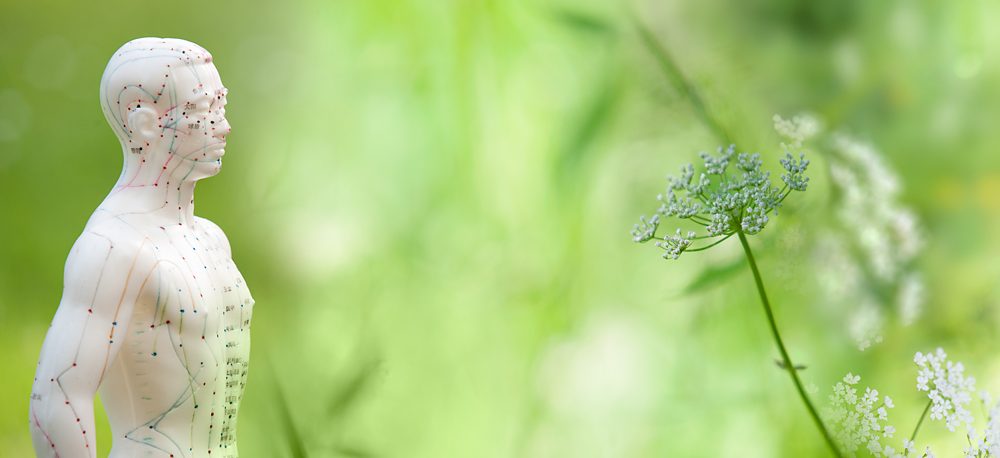Without conventional medicine and without the basics of chemistry, biochemistry and physiology, without the knowledge of human anatomy and the results of scientific research, many diseases can neither be prevented nor fought.
Nevertheless, in addition, many disorders and diseases can be treated with a holistic therapy, in which not only the symptoms are fought, but in which the disease is understood as a disturbance of the harmonious balance between body and soul. The big advantage: these “gentle” treatment methods are mostly free of side effects. The small disadvantage: The costs are not always covered by health insurance. Just ask us – we will be happy to advise you.
We offer the following naturopathic treatment methods and programs, the use of which always depends on the individual disposition and the symptoms:
Defense enhancement
Intestinal cleansing/microbiological therapy
Detoxification
Therapeutic fasting
Medicinal herbs (European)
Kneipp therapy
Acupuncture
Acupuncture – probably the best known Chinese healing method. The European term acupuncture means “healing with needles” – from “acus” (lat. the needle) and “pungere” (lat. to prick). Even though the rationales in conventional medicine and TCM (traditional Chinese medicine) differ as to why and how acupuncture works, one thing is clear: it is extremely effective and can be used both in the treatment of acute and chronic pain conditions and diseases of the musculoskeletal system, as well as to alleviate or cure many functional and mood disorders (e.g., irritable bowel syndrome, tinnitus, sleep disorders, menstrual and menopausal problems).
Acupuncture is very carefully and individually adjusted to the patient. There are different forms of application, for example, ear acupuncture and hand acupuncture, depending on where the needles are placed. A total of 361 acupuncture points have been discovered on the body. Usually, a maximum of 16 needles are placed during one treatment. They are made of steel and are used only once. The treatment is largely painless and lasts between 20 and 30 minutes. A therapy usually includes 10 to 15 sessions. The treatment interval is usually one week. Acupuncture is now also recognized by conventional medicine and thus by health insurance companies as a low-risk and effective therapy.
Draining procedures
(e.g. bloodletting, amalgam and heavy metal drainage, cupping treatment)
These very old treatment methods, which are known in various forms all over the world, are based on the fact that fluid which has accumulated in the organism is drained off again. Such treatment often leads to rapid relief and thus to the alleviation of symptoms. With the accumulated fluid, waste products and toxins can also be eliminated. This elimination can take place naturally through the digestive system, as in the case of amalgam and heavy metal elimination, but also through the skin, as in the case of cupping or bloodletting.
Homeopathy
Homeopathic treatment follows the principle Similia similibus curentur – similar things are cured by similar things, according to Hahnemann (1755-1843), the founder of homeopathy in Germany.
Homeopathy is to be understood as a stimulus-response therapy. The homeopathic remedy sets a specific stimulus, the body reacts to it by mobilizing its self-healing powers and thereby restoring its own healthy balance.
Plant, animal and mineral substances are used as homeopathic remedies in various potentized forms. The effective spectrum of a substance can be determined by drug tests on a healthy person. According to Hahnemann, by using a homeopathic remedy, a gentle (with few side effects), fast and lasting cure can be achieved.
Homeopathy is successfully used for acute diseases, e.g. flu-like infections, respiratory tract infections, earaches, infections of the gastrointestinal tract, as well as for chronic diseases, e.g. states of exhaustion, susceptibility to infections, allergies, hay fever, asthma, neurodermatitis, chronic digestive complaints, headaches and migraines.
Chronic diseases require constitutional treatment, the basis of which is an initial anamnesis. The following anamneses are agreed upon after the course of recovery.
During the treatment please do not use zinc ointments, no treatment with cortisone, notification in case of treatment with antibiotics. Coffee, camphor and menthol should also be avoided.
Homeosiniatry
This is the name given to a combination of classical homeopathy and elements of traditional Chinese medicine.
Neural therapy
Neural therapy (with procaine) – is used to treat pain conditions and interference fields. The therapy is based on injecting locally effective anesthetics to locate disorders and relieve pain.

